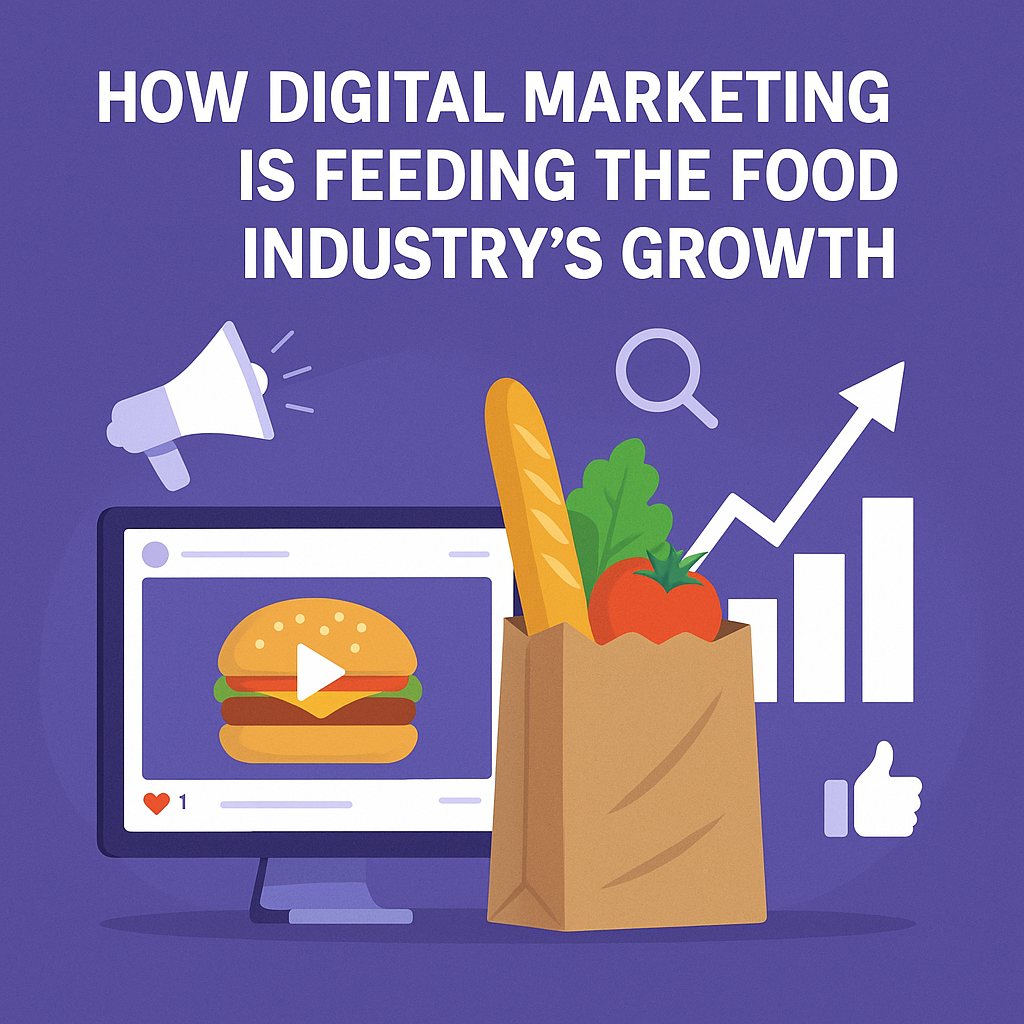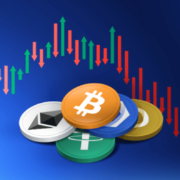How Digital Marketing is Feeding the Food Industry’s Growth
A tiny bakery tucked away in rural Vermont once relied on weekend tourists and word-of-mouth to stay afloat. But one day, someone filmed their apple cider donuts being fried, dusted, and packed in slow motion—and that clip went viral on TikTok. Within a week, they were fielding international shipping requests, and a month later, they were partnering with a logistics company to handle global orders. All from one 15-second video.
This isn’t a rare story anymore. In the age of digital cravings, marketing isn’t just a department—it’s the lifeline of every food business, whether it’s a heritage restaurant or a new snack startup. From quirky memes to hyper-targeted ads, food brands are finding that pixels and platforms are as crucial as pots and pans.
Let’s dig into how modern food businesses are using digital tools not just to survive but to scale, sizzle, and sometimes, go completely viral.
1. The Digital-First Appetite: How Consumer Behavior Has Changed
Just a few years ago, your neighborhood’s best burger joint could rely on foot traffic and maybe a local newspaper write-up. Fast forward to today, and the game has flipped. People are discovering new dishes through Google Maps reviews, Instagram stories, and TikTok comments before even glancing at a menu.
COVID didn’t create this shift—but it sure hit the fast-forward button. Lockdowns forced even the most traditional spots to think digitally. Suddenly, everyone needed a website, a delivery plan, and some kind of presence on social media. It was adapt or disappear.
And so began the era of “scroll to stomach.” Now, cravings are often sparked while lying in bed watching a stranger try Korean corn dogs or spiral-cut potatoes. That split-second dopamine hit of watching cheese pull or sauce drizzle can send a viewer from curiosity to cart in minutes.
This isn’t just about restaurants. CPG food startups, meal kit services, and even spice brands are building their customer bases entirely through digital interactions. Discovery now happens in the palm of your hand—and if you’re not showing up there, you might as well be invisible.
2. Branding in the Age of Bites and Bytes
In the old world, branding was a logo, a tagline, and maybe some color-coded packaging. In the digital era, it’s a living, breathing thing. It has a voice. It posts memes. It replies to comments. It dances on TikTok. And yes, it gets roasted on Reddit sometimes, too.
Successful food brands are crafting identities that go far beyond what’s being served. They build stories around origin, sourcing, personality, and quirks. And it’s not always polished. In fact, raw, funny, and even awkward content often feels more authentic—and performs better.
Take the case of a small-batch hot sauce company that posted a meme about surviving a breakup with nothing but their jalapeño-infused blend. It made the front page of Reddit. The result? A surge in orders, a sold-out inventory, and a waitlist that grew longer than a brunch line in Brooklyn.
Then there are the personal brands. Chefs with strong social voices are launching microbrands that punch way above their weight. They build trust by sharing behind-the-scenes prep, family recipes, and the occasional kitchen disaster. Suddenly, you’re not just buying a cookie—you’re buying into a whole vibe.
3. The Menu of Modern Marketing Tools
Digital marketing isn’t a single dish—it’s a full menu. And like a good tasting course, the best results often come from mixing and matching flavors.
SEO might sound like something for tech nerds, but it’s become essential for food blogs, ghost kitchens, and even brick-and-mortar restaurants. Showing up on the first page of Google when someone searches “best vegan burger near me” can be the difference between a packed weekend and a silent kitchen.
Paid ads, especially on Google, Instagram, and Facebook, remain a staple—but they need seasoning. Ads that feel like ads get scrolled past. The winning ones blend visuals, urgency, and a pinch of humor. One local pizza joint learned this the fun way. After testing a few Google ads, they retargeted visitors who didn’t finish their online orders with a discount and a cheeky message: “Still hungry?” Their weekly orders doubled.
Then there’s SMS marketing, loyalty apps, and good old-fashioned email campaigns. But today’s emails aren’t dull newsletters—they’re dynamic, seasonally themed, and sometimes interactive. A donut shop in Portland sends out monthly flavor ballots. Fans vote, and the winning donut goes on the menu. It’s part polling, part marketing, and all delicious.
4. Social Media: The New Food Court
The food court of the past was all about greasy trays and neon signs. Now, it’s Instagram Reels, TikTok recipe hacks, and YouTube cooking vlogs.
Short-form video content has become the main course. A 10-second clip of perfectly seared steak, a behind-the-scenes look at a ramen broth boiling for hours, or a fast-forwarded cake decoration can rake in millions of views. These aren’t just snacks for the eyes—they’re direct marketing tools that turn watchers into buyers.
User-generated content (UGC) is another secret weapon. Customers film their meals, review new items, and post unboxing videos. The authenticity—filtered or not—builds trust far faster than polished ads. A sushi joint once got flooded with orders after a food vlogger unknowingly tagged them in a spontaneous 3-minute rave. No collab, no payment—just honest love.
Going viral, of course, is a bit like catching lightning. But there are trends that help. Behind-the-scenes clips, quirky staff intros, origin stories, and oddly satisfying cooking ASMR videos often hit the mark. One small dumpling spot saw a tenfold increase in sales after posting a video of their chef folding dumplings with hypnotic speed. It racked up millions of views. The caption? Just one word: “Therapy.”
5. Data-Driven Dining: Analytics, AI, and Customer Retargeting
Food is one of the most emotional purchases out there. But that doesn’t mean you can’t apply logic—and data—to grow smarter.
Thanks to tools like Google Analytics, Shopify dashboards, and Meta’s business suite, even small food businesses can track who’s clicking, ordering, and ghosting. Heatmaps can show where people drop off on your menu page. A/B testing can reveal whether “Spicy Honey Glaze” converts better than “Fire Kissed.”
Then there’s AI. Tools like ChatGPT are being used to write playful menu descriptions, generate ad copy, and brainstorm content ideas. Some platforms can even predict which items are likely to be best-sellers based on past patterns.
Retargeting isn’t just for tech brands. Restaurants and snack startups are using it to win back hungry shoppers who abandoned their carts or forgot to finish checkout. Send a reminder with a photo of what they almost ordered, add a discount, and watch the conversions roll in.
Data doesn’t replace creativity—but when paired well, it adds a sharp edge to your strategy knife.
6. Challenges in the Digital Kitchen
Of course, it’s not all hot takes and heart reacts. The digital space can be as brutal as it is bountiful.
Oversaturation is real. For every sushi tutorial or sourdough meme, there are thousands more floating around. Standing out takes effort, creativity, and sometimes sheer luck.
Then there’s the platform shuffle. Build your following on Instagram? Great—until the algorithm changes and your reach plummets. Many businesses are learning not to put all their digital eggs in one basket.
And let’s not forget the trolls. One angry Yelp review or a viral TikTok roast can do real damage. Responding with humility, humor, and humanity is key—but it’s not always easy, especially in the heat of the kitchen.
7. What’s Next: Virtual Brands, Immersive Experiences & Sustainability Signals
Looking ahead, the digital dining table is getting even more experimental.
Virtual brands are on the rise—ghost kitchens launching entirely new menus without a single storefront. Some are even creating metaverse food trucks, offering limited drops of food-themed NFTs. A few are pairing digital art with real-world items, like a ramen NFT that comes with an invite to a secret Tokyo dinner.
On the transparency front, digital storytelling is bringing ethics and sustainability into the spotlight. Consumers want to know where their ingredients come from. Some brands now use QR codes to show the farm-to-table path of every item. It’s not just about flavor—it’s about values.
AR is entering the game too. Restaurant furniture is being digitally mapped so customers can virtually explore seating before arriving. Some apps let you preview menu items in 3D on your phone before ordering. Others predict when you’ll be hungry and send a perfectly timed notification.
Tech doesn’t replace good food—but it does enhance how we discover, connect, and indulge.
Bringing It All to the Table
Digital marketing isn’t just a cherry on top anymore. It’s the batter, the frosting, and the oven itself. For food businesses trying to grow in today’s hyper-connected world, showing up online isn’t optional—it’s the main ingredient.
Whether you’re selling hot sauce, dumplings, or gourmet cotton candy, the brands that win are the ones who understand what makes people stop scrolling, start salivating, and hit “order now.” It’s part art, part science, and part storytelling.
And while the platforms may shift and the algorithms may evolve, one thing’s clear: the future of food is being served through screens—and it’s never looked more appetizing.




